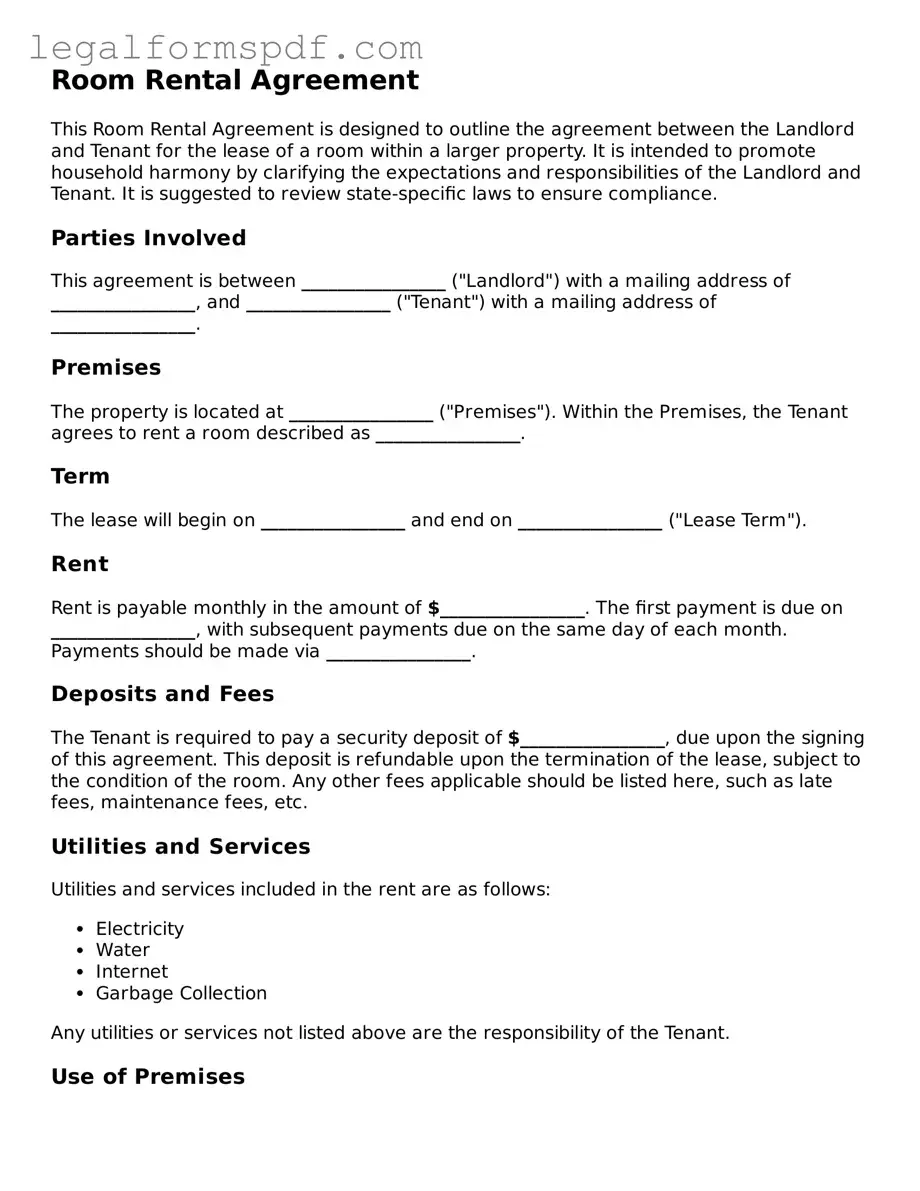Room Rental Agreement
This Room Rental Agreement is designed to outline the agreement between the Landlord and Tenant for the lease of a room within a larger property. It is intended to promote household harmony by clarifying the expectations and responsibilities of the Landlord and Tenant. It is suggested to review state-specific laws to ensure compliance.
Parties Involved
This agreement is between ________________ ("Landlord") with a mailing address of ________________, and ________________ ("Tenant") with a mailing address of ________________.
Premises
The property is located at ________________ ("Premises"). Within the Premises, the Tenant agrees to rent a room described as ________________.
Term
The lease will begin on ________________ and end on ________________ ("Lease Term").
Rent
Rent is payable monthly in the amount of $________________. The first payment is due on ________________, with subsequent payments due on the same day of each month. Payments should be made via ________________.
Deposits and Fees
The Tenant is required to pay a security deposit of $________________, due upon the signing of this agreement. This deposit is refundable upon the termination of the lease, subject to the condition of the room. Any other fees applicable should be listed here, such as late fees, maintenance fees, etc.
Utilities and Services
Utilities and services included in the rent are as follows:
- Electricity
- Water
- Internet
- Garbage Collection
Any utilities or services not listed above are the responsibility of the Tenant.
Use of Premises
The Tenant agrees that the Premises will be used exclusively as a personal residence. No illegal activities, business operations, or nuisances are allowed on the premises.
Maintenance and Repairs
The Tenant is expected to keep the rented room and any shared areas clean and in good condition. Any damages beyond normal wear and tear caused by the Tenant will be repaired at the Tenant's expense.
Alterations and Improvements
No alterations, additions, or improvements shall be made by the Tenant without the prior written consent of the Landlord.
Rules and Regulations
The Tenant agrees to comply with all rules and regulations established by the Landlord regarding the use and care of the property. A list of said rules should be attached to this agreement.
Termination
Should either party wish to terminate the agreement, a notice of ________________ days must be provided. Early termination conditions, if any, should be clearly stated here.
Governing Law
This agreement shall be governed by and construed in accordance with the laws of the state where the Premises are located.
Signatures
By signing below, both the Landlord and Tenant agree to all terms and conditions outlined in this Room Rental Agreement.
Landlord's Signature: ________________ Date: ________________
Tenant's Signature: ________________ Date: ________________
